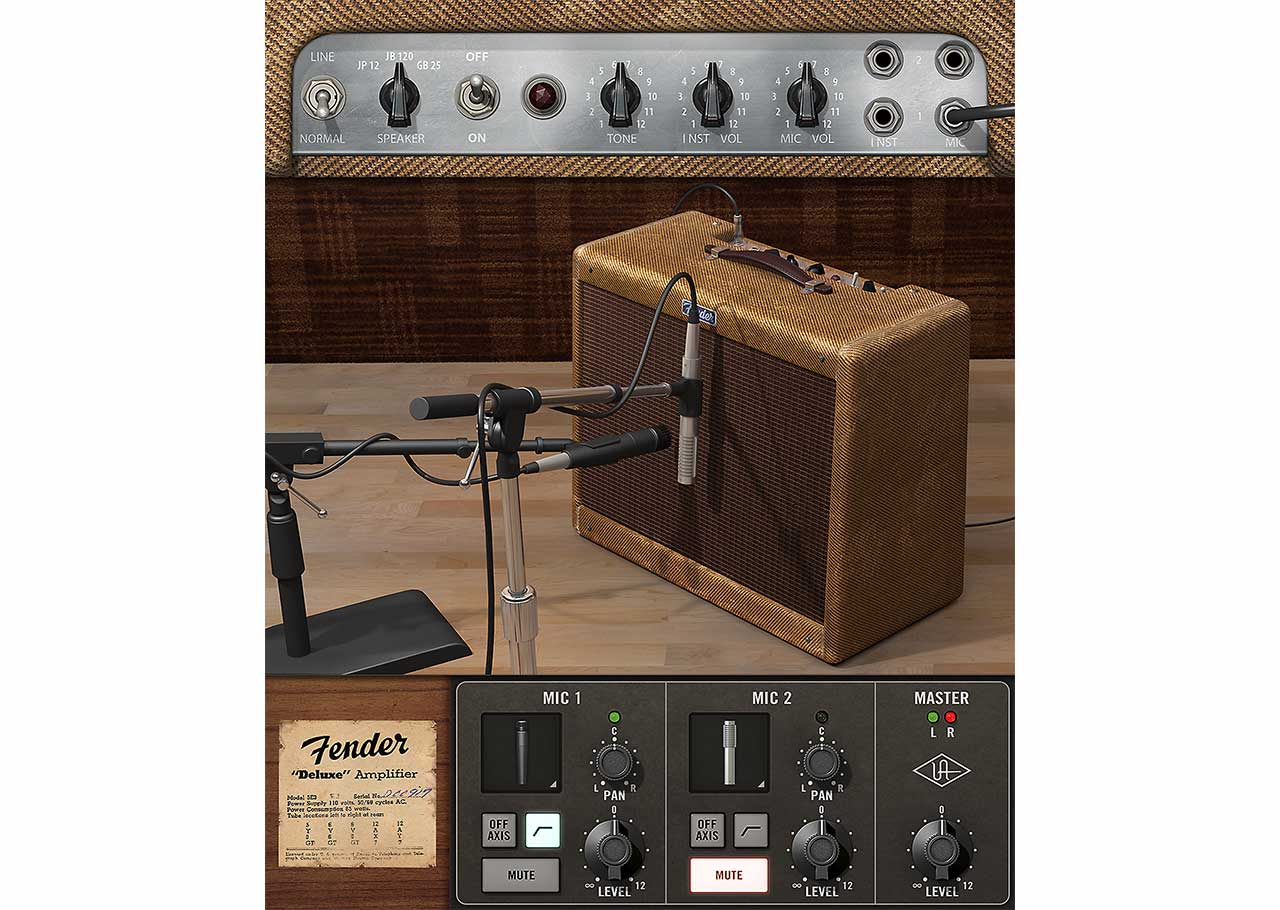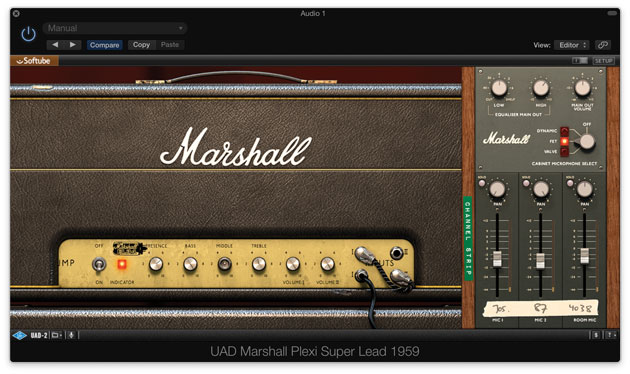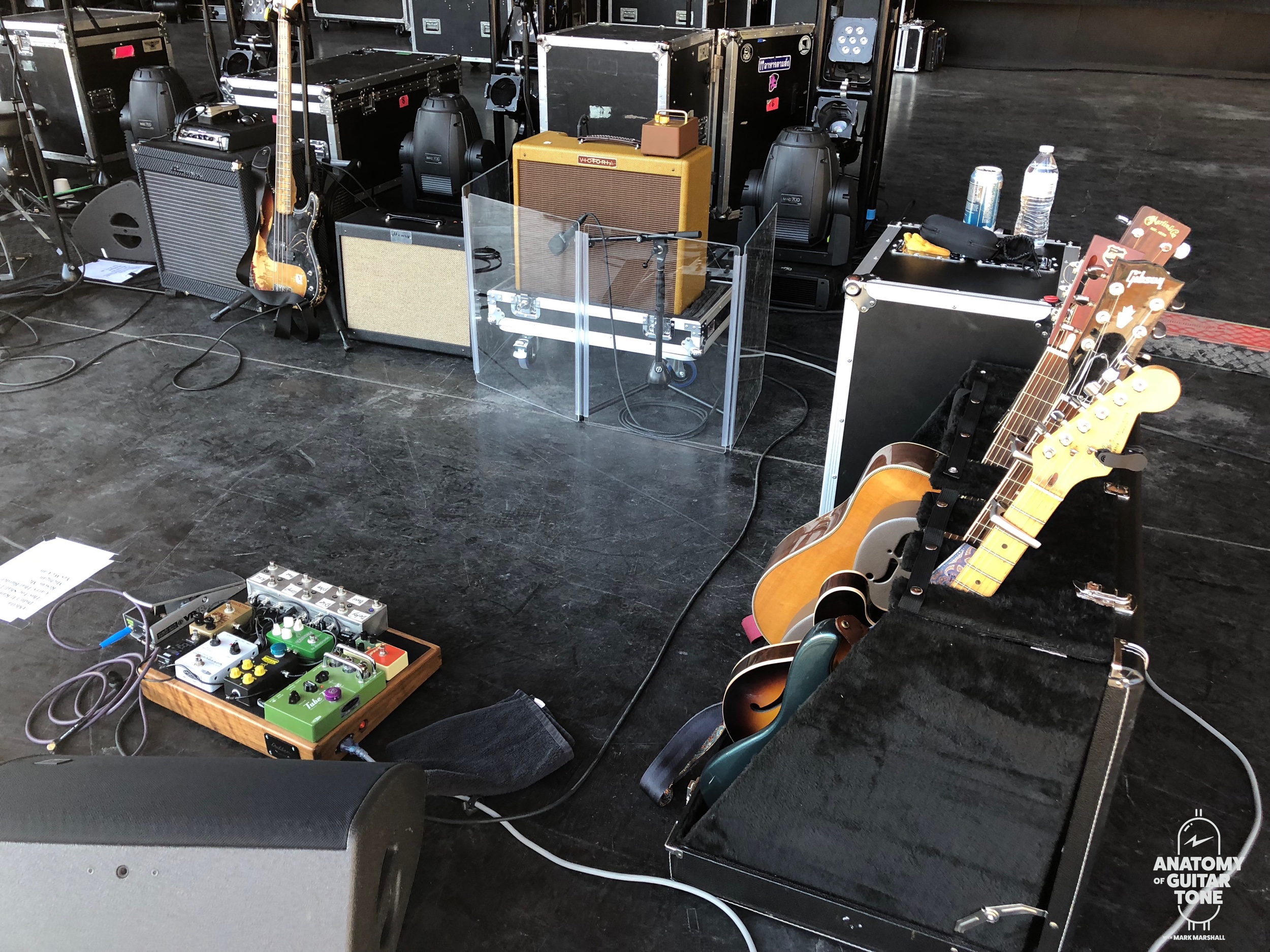Strymon Iridium and Live Amp Sim Thoughts
Amp and speaker cab emulators are trending right now. A lot of musicians are recording less in commercial studios. Perhaps they can’t record a real amp in their home studio due to volume restraints.
Some guitarists are looking for solutions to loud or heavy amps. Perhaps there are volume limitations on the gig. Or guitarists are trying to have as little a footprint as possible when traveling to gigs. For these players, an amp in a pedal is appealing.
As attractive as it is, one has to wonder what the real-world experience of using an amp/speaker sim is. Most of the arguments I hear from guitarists are about the authenticity of tone.
“In a lot of cases, the dream of playing gigs ampless is a bit lofty. ”
When Strymon released the Iridium a few weeks ago, I got several messages from guitarists asking my thoughts. Such questions led me to open up a conversation about how each of these guitarists would be using the Iridium.
For the most part, they were looking for an amp alternative for live performance. I feel that how you are going to apply an amp sim changes my opinion on practicality and usefulness.
Using an amp in a box isn’t a new idea for the studio. I’ve been asked to use them on sessions for over a decade now. They have greatly improved over the years. I consider UAD to be at the forefront of the best sounding amp aims when it comes to plugins.
If you are unable to record a real amp, the UAD amp sims can be a real lifesaver. They allow you to make music. And they sound good. Are they a perfect substitute for a real amp? No. It doesn’t mean they sound bad or will prevent you from realizing your ideas. It just means they don’t sound as good or better than a real amp. That’s the truth. But, we shouldn’t lament that when we need to make art in volume restrained environments. Use whatever tools you have to create.
Sometimes I use the UAD Marshall or UAD Fender amp sims late at night when I can’t fire up my amp.
Not a hater
I’m not anti-technology. I like musical advancements that help many create art in the studio.
The OG Crank Yankers
When the application of tools such as the Iridium turns to a live setting, I have very different feelings. In a lot of cases, the dream of playing gigs ampless is a bit lofty.
There will be guitarists that would follow this statement with a barrage of comments like You can use stage monitors. You can get in ears. The guitar sounds better because the sound person has more control. Yadda yadda yadda
Getting real over here
Let’s have some real talk about playing live. For most musicians, the stage is an audio battleground. You’re lucky if you even get a personal monitor as a guitarist. If you do, the chances of it working to your desires are somewhat slim. The chances of that monitor being a super high-quality speaker are extremely rare.
“It’s hard to play well when you can’t hear yourself.”
Even if the amp sim you have sounded outstanding such as the Strymon Iridium, you’re not going to be able to enjoy the quality. The monitors will significantly diminish the tone.
Another hurdle is knowing if your guitar will be audible. It’s hard to play well when you can’t hear yourself. In a studio situation, this is an easy enough fix. Live, making sure you can hear yourself, is a much more complicated issue to solve, which brings me back to stage monitors. Aside from them not sounding very good, they tend to not be reliable for hearing your guitar.
On a stage with an acoustic guitar and light bass, this won’t be too much of a problem. Throw an acoustic drum kit into the mix, and the complications begin.
The easiest way to compare the experience would be to think about playing acoustic guitar DI. Whether we’re talking about an amp sim or not, we’re talking about a DI guitar.
Have you ever been on stage with a full band, including a bass amp and acoustic drums, and tried playing acoustic lead or rhythm guitar? How was that experience? Did you struggle to hear yourself? Did you feel disconnected? Are were your playing dynamics limited?
Hearing acoustic guitar onstage is such an issue that I even bring an acoustic guitar amp for stage monitoring to gigs.
Let’s look a several scenarios most musicians experience on a regular basis.
1: The venue has a PA and sound person.
This environment is usually going to have a limit on soundcheck if there is even one. Often you only get a line check. It’s the musical equivalent of being shot out of a canon. You don’t have much time to develop a monitor mix. Which means you will be at a disadvantage.
Sometimes you can’t even move monitors around all that much. Or they have fewer monitors then you need.
JBL EON powered monitor
2: Playing with your speaker.
You could bring a speaker and a power amp as an onstage monitor for the fractal. But, in my opinion, you may as well bring am amp at this point. You’re not bringing less gear. And although it seems an advantage to have more tonal options at your fingers, it doesn’t always help your tone.
3: The band has their own PA
If you own your own PA, then the Strymon Iridium can be an excellent match for you. In this scenario, you supply the monitor and the mix. You’ll be able to set up an environment so you can hear what you want to hear. That is unless your monitor is underpowered for the band.
4: in ears
In-Ears have become an excellent solution for some environments. Broadway shows, for example, rely on in-ear monitors and a quiet stage, which makes a unique pairing for the Iridium.
The Broadway environment is unique, though. It’s the same stage every show, and everything stays the same. Consistency is the point of Broadway. You get the luxury of dialing in your mix. When you come back, it’s the same.
Ultimate Ears in-ear monitors
On club gigs, I have come back after soundcheck, and my monitor mix wasn’t even the same. Obviously, because of the consistency of Broadway theaters and performances, you can make great use of methods not applicable to other stages.
On Broadway gigs, you’re not competing to be heard or to hear yourself. All elements are fully dialed in. That kind of time and care isn’t available on most gigs.
In-ear monitors, for the most part, require crew that works for you. They don’t work so well when you can’t adjust the mix.
In-ear monitors are a significant advancement in monitoring. But they do not plug and play. It’s appealing for good reason. In a lot of environments, they’re not practical, though.
There are a lot of touring bands that tour with their personal digital monitor board to keep their in-ear monitors mixes the same every night. Without now, you’re starting your monitor mix from scratch every night. In ears can be rather unforgiving since a lot of the natural stage sound gets blocked out.
My live setup
For me, my guitar amp is my monitor on gigs. It’s how I hear myself. I never put my amp into the monitors. 9 out of 10 times, the monitors don’t authentically replicate the sound of my amp. That’s a polite way of saying it sounds awful. Bad stage sound applies to most stages from a small club to full out festival stages. I remember the times I had a great monitor. Sometimes on a misty spring morning, I reflect on those few memories of monitor bliss.
Terrapin Crossroads club with great monitors
In a situation where I’m not traveling with a crew, and we don’t have our own monitor board, my amp is my lifeline. Relying on someone else to be able to hear me is a nightmare.
I know a lot of professional singers that even got used to wearing earplugs for the coupling effects it creates, allowing you to hear yourself. Singes do this, so they don’t have to rely on monitors. Coupling doesn’t work with the guitar, so we need an amp.
Tone
Now the part everyone is debating. My controversial statement is I don’t think amp sims sound as good, and I never enjoy people playing them in live settings. There I said it.
As mentioned earlier, I use UAD amp sims in the studio. I’m not here to make guitarists feel wrong about whatever amp limitations they may have.
Broadway NYC
This discussion is more about making choices when you have the option. Arguing that your vintage Princeton Reverb is going to sound better on a quiet Broadway gig isn’t going to get you far. The most crucial factor on Broadway gigs is making sure the vocals are audible at ALL times. Thus tone has to take a backseat.
Playing in a rock band in large venues or clubs is another story. Last year I stood on stage with a famous guitarist who uses Fractals for all amp emulations. His reasoning is he wants to be able to create emulations of more amps then he would be able to carry on the tour.
Fractal Amp Modeler
Standing on stage as he was playing through his rig didn’t sound bad. It sounded big enough, I suppose. Standing out front was a different issue. The tone was never right. It just didn’t cut through the mix enough. When he played on his own, it sounded terrific. But, in context, it was muddy and somewhat flat.
Fender Super Reverb
The second guitarist in the band was playing through a real Super Reverb. When he played, the sound popped out and was present and alive. A real amp made a big difference. I’ve have found this to be the case with most guitarists I’ve heard using a fractal onstage. I’m not trying to hate on players.
The mixes are supposed to be cleaner and have more separation. But, I can never hear the guitar with the same definition as I can a real amp. Sound mixers say that live mixes sound better than ever. But honestly, I haven’t found these advancements always to sound pleasing. Live sound is often overcompressed for my tastes now.
I once played a show at McCarren Park in Los Angeles. The backline company forgot to bring me a guitar amp. We were waiting in soundcheck for it to be delivered, and the sound man said he could run me through the board and get a way better sound then I can get from a real amp.
All I can say is I may now have a restraining order in LA county. The sound person is not always right, and they sometimes don't understand the intricacies of a real amp.
Kemper Amp Profiler
I may also be an old crank yanker, but I don’t like being on a silent stage or watching a band side stage that has no amps. It sounds so deflating. I’m not saying everyone needs to be blaring. But only hearing drums on stage is a real drag.
That was all opinion-based, and some may feel different. The most significant point of this article is not to make you share my opinion. It’s to help you decide if using the Strymon Iridium or similar device is right for you.
Iridium is a tool. Sometimes you need a hammer. Sometimes you need a screwdriver. Even if you feel the sound of such devices is adequate, the environment may not be. You have to observe your situation. As of now, it’s not as simple as the Iridium is a full amp substitute for every application.




















